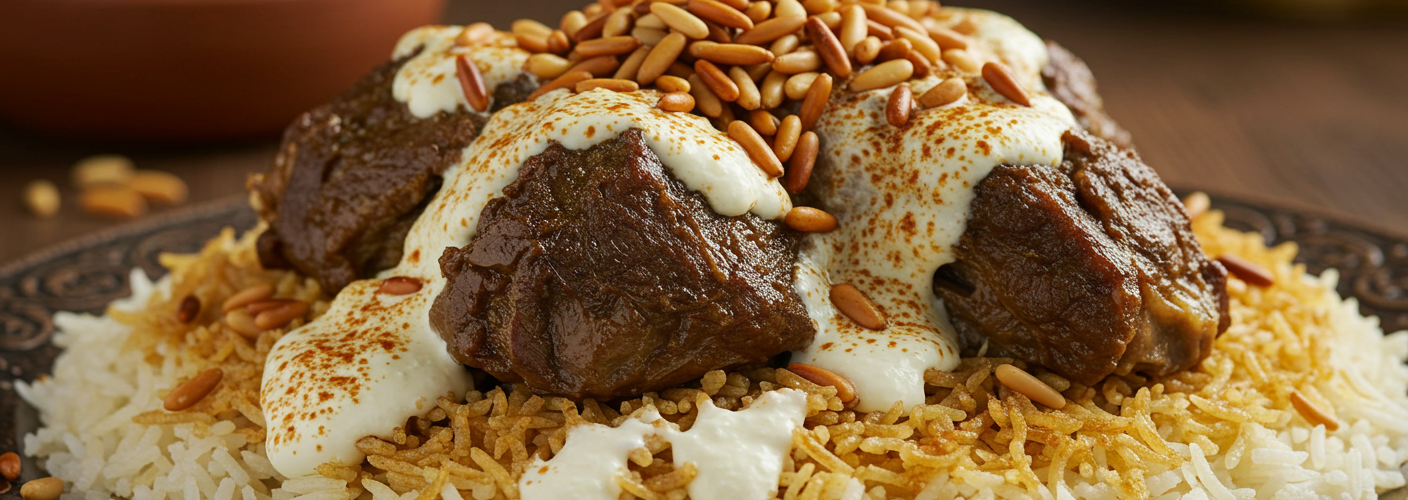Mansaf is more than just a dish; it’s a symbol of hospitality and cultural heritage for many in Jordan and the broader Middle East. This traditional meal, composed of succulent lamb cooked in a rich and tangy sauce of dried yogurt, is often served on a bed of fragrant rice, making it a feast for both the eyes and the palate.
At the heart of mansaf is the lamb, which is typically simmered to perfection. The cooking process doesn’t just tenderize the meat; it infuses it with deep flavors. The lamb is often cubed and slowly cooked, allowing it to absorb the spices and the essence of the dried yogurt, known as “jameed.” This distinctive ingredient is made from fermented, dried yogurt and is rehydrated before use, imparting a unique tartness and creaminess to the dish.
The preparation of mansaf is a labor of love that often involves families coming together in the kitchen. Traditionally, the lamb is cooked in a large pot, which becomes the centerpiece of gatherings. As the meat simmers, the aroma fills the household, inviting everyone to gather around in anticipation. The accompanying rice is usually prepared separately, seasoned with spices like saffron or turmeric to add both flavor and color, creating a vibrant contrast to the rich hues of the lamb.
Serving mansaf is a communal experience that reflects the bustling warmth of Jordanian culture. It is typically presented on a large platter, where a generous mound of rice is dressed with tender lamb pieces and drizzled with the luxurious jameed sauce. Traditionally, the dish is eaten by hand, using pieces of flatbread to scoop up the rice and meat, emphasizing the communal nature of the meal. This practice reinforces family bonds and friendships, as everyone shares in the experience, reinforcing the sense of community that is so vital in Jordanian society.
Mansaf is often served during significant celebrations, such as weddings, holidays, and other joyous occasions. It embodies hospitality, as serving this dish to guests is a gesture of honor and respect. In many instances, the meal is accompanied by side dishes like fresh salad or roasted vegetables, adding a delightful refreshing balance to the richness of the lamb and yogurt.
Beyond its culinary aspects, mansaf also holds cultural significance. It tells the story of the nomadic Bedouin lifestyle, where the preparation of lamb and dairy products was a way of life. The traditions surrounding mansaf continue to be passed down through generations, linking the past with the present. For many Jordanians, preparing and sharing mansaf is not only about the food but also about preserving their identity and celebrating their heritage.
In summary, mansaf is a dish that encapsulates the essence of Jordanian culture, intertwining flavor with tradition. Whether enjoyed at a family gathering or a local celebration, it offers a taste of history and an invitation to connect with loved ones. For anyone looking to explore the depths of Middle Eastern cuisine, mansaf is a must-try, as it promises not only a satisfying meal but also a glimpse into the rich tapestry of Jordanian life. So, gather your family and friends, prepare this dish with care, and allow the flavors of mansaf to transport you to the heart of Jordanian hospitality.




Add comment